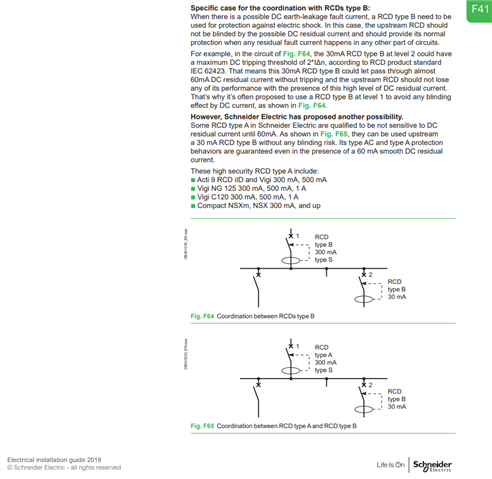Proposed installation of EV charge point with two socket outlets on same charger. Manufacturer claims maximum DC leakage current no more than 6mA from charger.
Installation is a small hill farm with multiple armoured submains to outbuildings. Whole site is TT earthing system with an existing 100mA (s) Type A RCD main switch.
One outbuilding has 4kW Solar PV with inverter no simple separation manufacturer claims maximum DC leakage current no more than 6mA.
With the addition of an EV charge point to an existing submain on a remote building there is the possibility of EV leakage 6mA + PV leakage 6mA =12mA of DC leakage current which may blind the RCD main switch. I have tried to locate a 100A single phase time delayed type B RCD suitable for operation by an ordinary person but have failed however I have found a Schneider A9R35291 100A 300mA (s) type A super immunized which is suitable for use with DC currents up to 60mA.
The Schneider information says it has proposed another possibility with the use of this product and does fit with my installation requirements.
I'm not sure where I stand when the wording says proposed another possibility.

